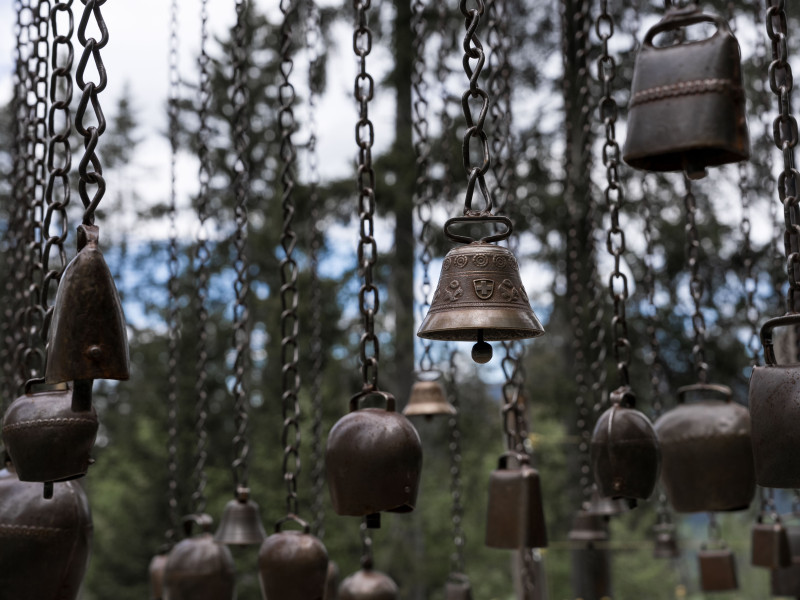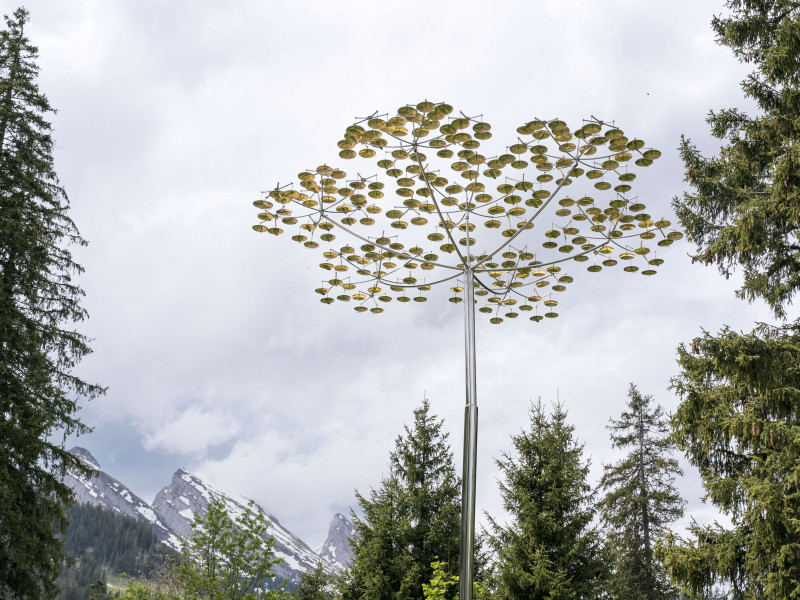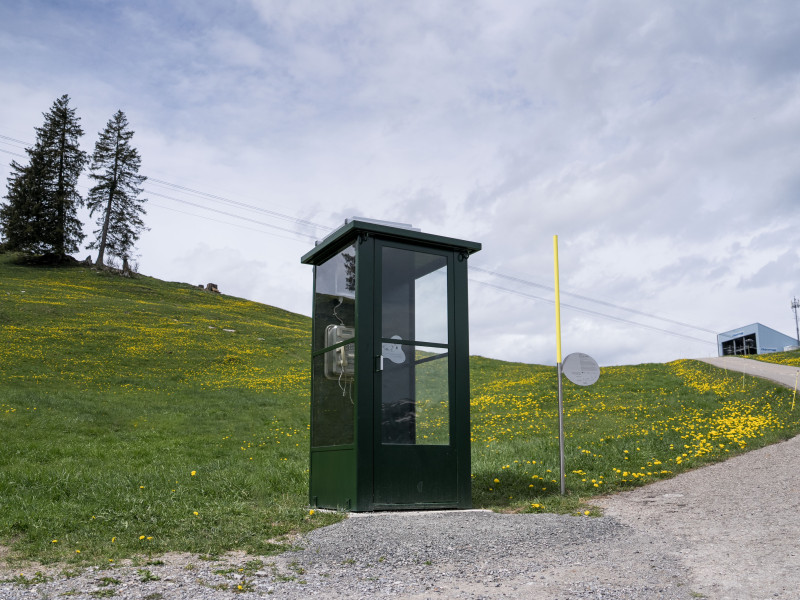
The Aeolion stands conspicuously and exposed in the landscape: Florian Dombois's rotatable instrument stretches towards the sky as if waiting for the wind. At the same time, it presents itself to the viewer and invites the observer to make it sound. If the Aeolion is skilfully turned into the wind and the string is sensitively tensioned using a lever, even a light wind can be heard.
‘I am interested in the dialogue between man and wind: how can I help the wind to make a sound and at the same time influence the sounds that arise?’
The vibrating piano string couples three parts of the instrument: the buzzer, the harp and the tremolo. The buzzer is located in the upper part – a band that hums in the wind and transmits its vibrations to the piano string. The string then vibrates in a natural wind tunnel, the harp. At the bottom, the string transmits all oscillations to a resonance body, a drum, and through its skin to a tremolo bar.
Active listening and playful sound exploration
With a little wind, the Aeolion will play by itself – but visitors can influence the conditions of this sound production: The tremolo stick can be used to control the lower section of the string and adjust the tension of the entire system. This influences the pitch of the string. As soon as the Aeolion is swivelled via the ground rail, the angle to the wind changes. And that affects the string's vibration as well as the vibration of the buzzer. It has consequences for the volume at which the Aeolion then sounds.
Helping to create the sound of the event
Florian Dombois wants to create a connection: between above and below, heaven and earth, wind and man. Wind is the breath of the world. Instruments are usually there to express themselves – not so the Aeolion, whose name is an homage to King Aeolus, the guardian of the winds in ancient Greek poetry. With the Aeolion, the musician cannot express himself. He can only tune into the changeability of the wind with what he is doing and learn to deal with it. As with kites, the wind is the leader. The human, according to Dombois, is only there to help the wind to sound.
About the artist
Prof Dr Florian Dombois studied geophysics and philosophy and completed a doctorate in cultural studies. As an artist, he works with time and models, landforms, labilities, seismic and tectonic activities, and in particular with sound. He founded (and chaired from 2003 to 2011) the Institut Y at the Bern University of the Arts and has been a professor at the Zurich University of the Arts ZHdK since 2011. He teaches as a guest professor in Europe, Asia and America and received the German Sound Art Prize in 2010.
floriandombois.net ↗

